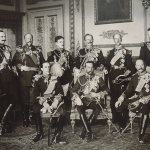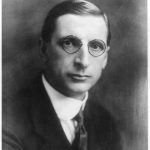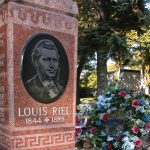Meiji means enlightened rule, and this was shown throughout the reign of the Japanese Emperor Mitsuhito, ruling from 1868 to 1912. After the fall of the Tokugawa Shogunate, a powerful group of Samurai decided (in January 1868) that the shogunate (‘federal’ rule by warlords) must be abolished as old-fashioned and unprogressive, and that power must be returned to the Emperor.
The Samurai wanted Japan to be strong enough to resist foreign domination, as well as to remove the Unequal Treaties, which gave Westerners a privileged position in Japan. Oddly enough, it was obvious that in order to succeed, they would have to adopt Western ideas and institution, and above all adopt Western armaments to replace the traditional sword, bow and arrow and cavalry mentality. Western countries had grown powerful by being modern and progressive, and many politicians thought the same must apply to Japan.
A series of radical reforms began which would affect all aspects of Japanese life, political, social, economic and even religious. The young Emperor had been thoroughly grounded by ambitious politicians in the ‘modern way of thinking and acting’ and was convinced he was right. Some historians prefer to call this period ‘The Meiji Revolution’ rather than restoration because nothing considered old-fashioned was restored.
Most warlords surrendered their lands to the Emperor without bloodshed and joined a centralized administration based in Tokyo, which had been called Edo though the name was changed in 1868. The imperial government had, surprisingly, no armed forces at hand, so it introduced conscription in 1872, which clearly marked the end of Samurai monopoly of military power, as the former warlords were instructed to break up their private armies. Most of them accepted this without protest, and even joined the administration as ‘advisers’ to the Emperor, gaining considerable political power. The most conservative (and old-fashioned but wholly honourable) of the Samurai refused to join in the fun, but the brutal crushing of the Satsuma Rebellion in 1877 meant the end of Samurai military resistance. The United States was involved in this, for strategic and economic reasons.
Saigo Takamori of Satsuma instigated the most serious of the anti-government rebellions after the Meiji Restoration. This powerful Samurai warlord was upset by the social and economic reforms and had suffered a large reduction in income. In 1876 he and all other Samurai was ordered to stop carrying swords, especially when attending government meetings. Saigo Takamori had resigned from the administration as it had refused militarily to compel Korea to end its exclusion and begin trading with Japan. Saigo was popular in Japan and with his people, being charismatic, brave, generous and utterly without ostentation. He had been a tutor in military matters of the young Emperor, and professed to love him as an honourable son. The region of Satsuma would follow him into Hell.
The Government feared a revolt and tried to force its reforms in the provincial capital of Kagoshima, southern Kyushu. Saigo then rebelled against the Government and his Emperor. His army approached Tokyo but the conscripts accompanied by many foreign units drove the sword-wielding Samurai army back to Kagoshima. The whole conscript army had to mobilize, 65,000 strong, and soon 6000 were dead and another 10,000 wounded but eventually modern weapons like America’s Gatling machine gun won the day and Saigo’s sharp swords lost the battle. Saigo himself, professing to the last his obedience to his ex-pupil, was killed on the battlefield, probably by the 50 mm bullets rapid-fired by the merciless Gatlings. It was the end of the rebellion.
The Hollywood film Samurai with Tom Cruise follows the story quite closely.











Leave A Comment